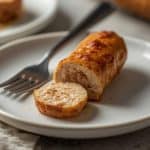The material used in the body of your pan will have a big impact on its performance and longevity, whether you’re just starting out with your first kitchen or replacing existing cookware.
Knowing the fundamentals of pan materials, uses and tips of best pots and pans buying guide will ensure that your culinary needs are met.
Pots and Pans Buying Guide: Getting to Know Your Pans
- Lid: Though not all pans come with a lid, they are useful for retaining heat and steam when cooking. Lids for saucepans and stockpots should have vents to prevent pressure from building up. Glass lids are popular because they allow you to see the progress of your cooking without having to remove the lid.
- Body: The type of material used in the body of your pan will determine how quickly your food will heat, how evenly the heat will distribute, and how long your pan will last.
- Handle: Handles and handgrips are securely welded, riveted, or screwed to the body of the pan, making it easier to maneuver your cookware around the kitchen. Shapes can vary, and ergonomic design with textured and soft touch grips is sometimes used to improve comfort.
Pots and Pans Buying Guide: Pan Materials
Aluminium
- Ideal for beginners
- Excellent at conducting heat
- Lightweight and easy to handle
Aluminium pans are inexpensive and make a good starter set of saucepans if you’re not sure what you’ll need or want to try out a specialty pan in the kitchen before making a large investment. Aluminium pots and pans are a softer metal that does not last as long as other metals and can react with acidic foods. While aluminum pans are quick to heat up, they are not suitable for use at extremely high temperatures. Hard anodized pans are a more durable option.
Stainless steel
- Polished finish
- Scratch resistant
- Durable and non-reactive
- Resistant to rust and corrosion
Stainless steel pans one of the most important part of pots and pans buying guide, because it is a non-reactive to acidic foods and resistant to warping, but they need a little help when it comes to heat conductivity. Stainless steel is a versatile and long-lasting material, but it is not naturally suited to conducting heat, which can result in hot spots as the heat struggles to radiate evenly. Stainless steel pans are frequently combined with a highly conductive aluminium or copper base or core to compensate for this.
Hard Anodised
- Twice as hard as stainless steel
- Non-stick and scratch resistant
For faster cooking, an aluminum core with excellent conduction distributes heat throughout the pan’s base and sides. Hard-anodised cookware, the ‘big brother’ of aluminum pans, has undergone a process to increase the natural oxide layer on the material’s surface, making it non-porous and non-reactive. The anodisation process extends the life of the pans and makes them less prone to corrosion, as well as providing anti-stick properties that help with cooking and cleaning.
Pots and Pans Buying Guide To Get The Best for You
Your choice will be determined by factors like budget, cooking purpose, frequency of use, and knowledge about tips of pots and pans buying guide which will give you an idea of how much value you’ll get from your purchase.
If you’re starting out, a set of saucepans and a frying pan will cater for most needs until you’re up to speed on what and how you cook most frequently. If you’re looking to upgrade your collection or add new pieces, your choice of pan materials will play a bigger part as well as speciality cookware designs.
Frequently used items are the core of your kitchen kit, so it’s worth investing in quality materials that will last. Cookware that is only used occasionally or is part of a new culinary venture won’t be relied on heavily, so high-end materials may not give you value for money. Something more affordable but less long lasting is fine for irregular use or experimentation and you can always upgrade to premium pieces once you’re confident of their place in your kitchen.
Was this helpful?
Hi there! I’m a food enthusiast and journalist, and I have a real passion for food that goes beyond the kitchen. I love my dream job and I’m lucky enough to be able to share my knowledge with readers of several large media outlets. My specialty is writing engaging food-related content, and I take pride in being able to connect with my audience. I’m known for my creativity in the kitchen, and I’m confident that I can be the perfect guide for anyone looking to take their culinary journey to the next level.







